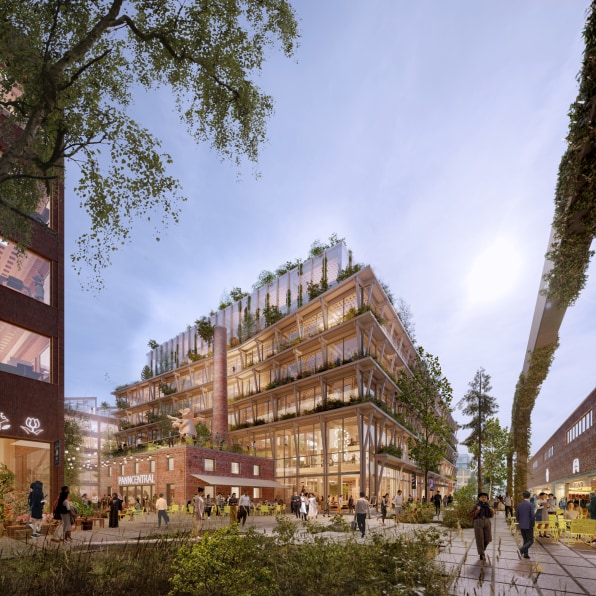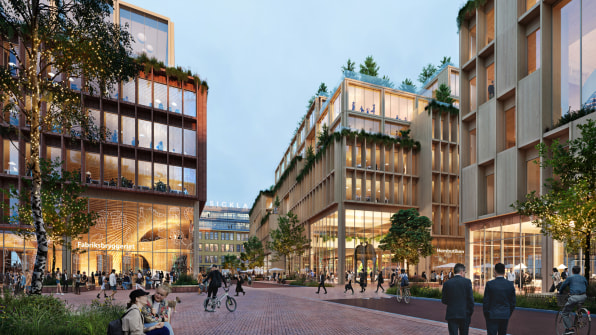- | 8:00 am
The largest ‘wooden city’ in the world is going up in Stockholm
Spanning 25 blocks, 30 sustainable mass timber buildings will add 7,000 new offices and 2,000 new homes.

In an old industrial zone in Stockholm filled with former factory buildings and parking lots, developers are planning to build a “wooden city”—the largest mass-timber development in the world, with 30 wood buildings spanning 25 blocks.
“We want to show what is already possible today,” says Annica Ånäs, CEO of Atrium Ljungberg, the development company behind the project. Mass timber—panels and beams made from layers of wood stacked together for extra strength—avoids the massive carbon footprint of standard construction materials like concrete and steel. The number of buildings using the material is quickly growing, but projects typically happen one building at a time.

“Our core strategy is to develop large interconnected areas,” Ånäs says. “In this way, we can create places full of variety that people enjoy and where they want to be, as opposed to just setting up a single building.”
The development will include 7,000 new offices and 2,000 new housing units, along with restaurants and stores. Areas nearby already have more housing than offices; by adding new workspace, the development can help shrink commutes. “Stockholm is imbalanced, since about half of the citizens live south of the center, but the big majority of workspaces are north of the center,” she says.

A new subway line will be opened in the area, so it will also be a short train ride from the city center. But by adding more to the immediate neighborhood, the project aims to support the idea of the 15-minute city, where it’s possible to get everywhere you need to go on a typical day via a short walk or bike ride. “The new development will create a dense, green city area with circular and sustainable principles built into the whole ecosystem,” Ånäs says.

Building with wood has advantages beyond the environment, says Ånäs, including the fact that construction can be both faster and quieter. And there’s evidence that living and working around wood helps improve well-being—studies have found that just seeing the material can reduce stress and improve focus.
Construction will break ground in 2025, with the first buildings completed in 2027. Because construction is happening in phases, the company expects to learn and iterate on mass timber building techniques as it goes. “We will learn much more from doing this at such a big scale,” she says.







































